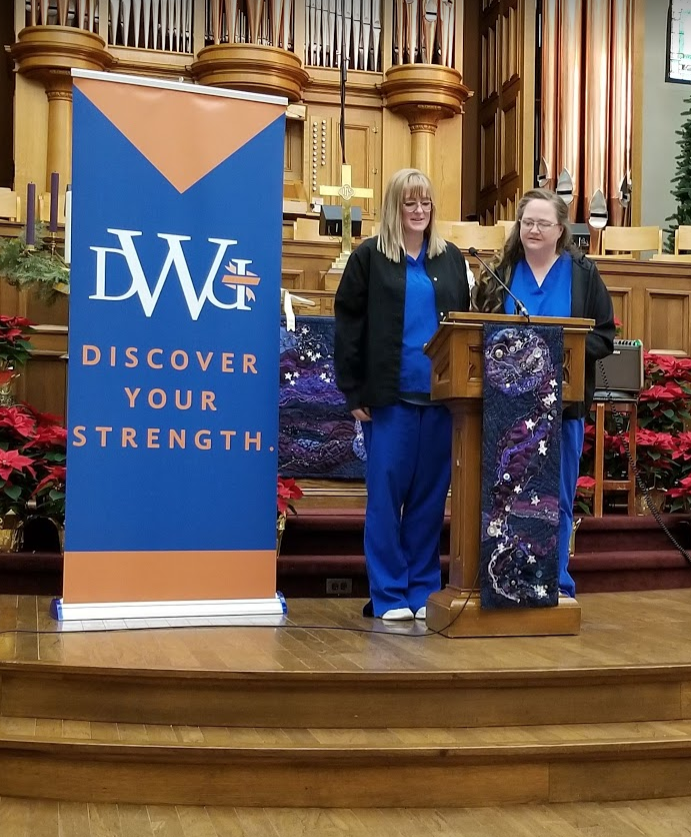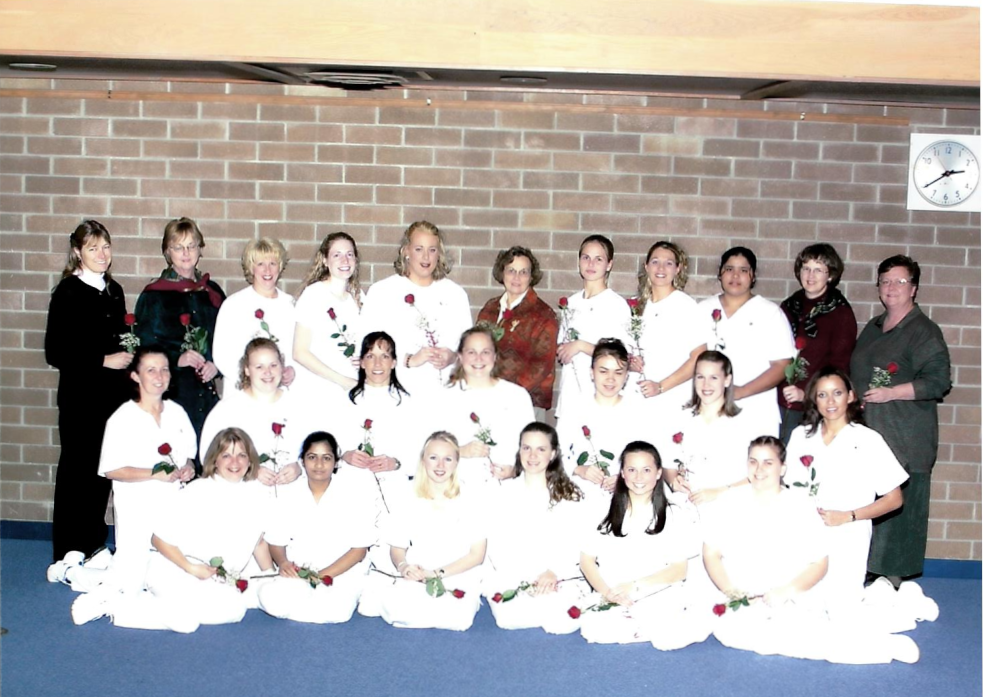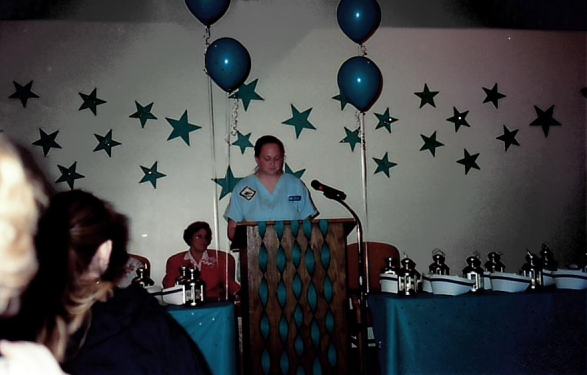CPR Manikins: All present and accounted for.


Be Well!
CPR Manikins: All present and accounted for.

THE FARMING GAME and The Farming Game Folks
THE FARMING GAME® really was invented on the seat of a tractor. It happened in a hay field just as the sun was coming up in early July 1979. George Rohrbacher, a rancher from Central Washington State, was driving that tractor. He and his wife Ann were struggling to hold on to their family farm. With two droughts within three years they, and many of their neighbors were losing that battle. George and Ann literally bet the ranch the game idea would work and mortgaged everything that wasn’t nailed down to produce the first edition of THE FARMING GAME®. The game, which was first assembled by the handicapped at Portland’s Goodwill Industries, has now sold several hundred thousand copies. Beyond being a fun family game, it has also been used in schools all over the world. In 1994 the World Bank sent George to Russia to oversee the translation of THE FARMING GAME® into Russian to assist the farm privatization effort after the breakup of the Soviet Union, (the game is now also available in a Russian language version).
THE FARMING GAME has sprouted new crops: FARMING GAME KIDS and a book. FARMING KIDS was designed, created and now is being sold by the second and third generations of Rohrbacher Family Farmers. The game is designed for young farmers, ages 3-9, to share in with the fun that has been created by THE ORIGINAL FARMING GAME. It won the highest award offered by the Canadian Toy Testing Council for Excellence. Now available is “Zen Ranching and THE FARMING GAME”, the humorous story of life on the farm and the birth of THE FARMING GAME® by George Rohrbacher, published in 1997. This is a story of a family effort that became larger than the sum of its parts. Prompted by hundreds of calls and letters, George wrote much more than a “how to invent and market a game book, he also captured a little lively piece of country living, and a fun inside look at life beyond the blacktop. For order information on the book, or games or extra game parts you can call 1-800-222-GAME, or write to: The Weekend Farmer Co., PO Box 896, Goldendale, WA 98620 Or visit our Website at http:/www.farmgame.com
THE FARMING GAME INSTRUCTIONS
• FARMING 1 • CUTTING HARVESTS IN HALF 3
• OBJECT OF THE GAME 1 • BANKRUPTCY 3
• TO START THE GAME 2 • BANKRUPTCY AUCTION 3
• TO PURCHASE PROPERTY • THE END OF THE GAME 3
AND EQUIPMENT 2 • ALTERNATIVE ENDING 3
• HARVESTING CROPS 2 • AUDIT 3
• OPTION TO BUY CARDS(O.T.B.’s)2• CREATION OF ADDITIONAL RULES 3
• FARMER’S FATE CARDS 2 • THE YAKIMA VALLEY 3
• OWNING EQUIPMENT 2 • PRONUNCIATIONS 3
• THE BANK 3 • MISSING PARTS 3
• DOUBLING HARVEST 3 • MOST ASKED QUESTIONS 4
FARMING: Modern farming requires a strong back for the work, a strong heart for the risks, and a good mind for the figures. The American family farm is a tough place to make a living. Unit profits (per calf, per bushel of wheat sold, etc.) are so small that it takes huge amounts of capital to put together a large enough farming operation (the land, equipment and money to operate) to support a family. About half of this nation’s two million farmers or their spouses work an outside job so they can stay on the farm. They are “Weekend Farmers,” farming early mornings, nights and weekends, trying to get that next piece of land, a tractor, a harvester; to finally farm big enough to afford to quit that darn job in town and come home and farm full time.
OBJECT OF THE GAME: A boardgame is a dream machine, a vehicle to create an alternative reality. In THE FARMING GAME®, each player starts the game with 20 acres inherited from Grandpa. This property includes 10 acres in hay and 10 acres in grain. The 20 acres is not a large enough farm to make a living for a family, so each game farmer must also have a part-time job in town. With each completed trip around the gameboard you receive $5,000 from your year’s wages to plow back into the farm. The object of THE FARMING GAME® is to build your farm large enough to be able to able to quit the job in town, come home equipment expense, he pays the bill to the bank unless a neighbor owns that equipment In this case, payment would be made directly to the equipment owner. (For example: if the bill is “Pay $2,000 if you don’t own .a tractor,” and only one player has a tractor,
you pay him the $2,000. If two neighbors own tractors, those players split the payment, $1,000 each, etc.) THE BANK The banking functions may be performed by one player as Banker, or every player may “help himself”. The Bank holds the money, the Bank Notes, and the vinyl acreage and machinery stamps. The bank requires the players to have at least 20% down in cash to purchase property. Each player can then borrow the rest from the Bank, up to a maximum of $50,000. (For example, to buy 5 acres of fruit valued $25,000, a player must have at least $5,000 cash for a down payment, and may borrow the balance of $20,000 from the Bank, taking $20,000 in Bank Notes to show his indebtedness.) The Bank also pays and /or collects all monies, including Harvest income or expenses. The bank does not buy back unwanted or over-leveraged property.
DOUBLING HARVEST: When landing on a week that says to Double your hay or corn harvests this year turn your crop land stamp sideways as a means to remember that those crop yields are doubled during harvest that coming year. At harvest, double the dollar amount on the HARVEST RATE CHART for the affected acres. Note: doubling “corn” means corn only and not wheat. When the year is over, turn your crop stamp back upright for normal harvests the next year. If you have already doubled your harvest and land on a week that says it double it again, you receive four times the harvest income, and so on.
CUTTING HARVESTS IN HALF: When bad weather cuts a harvest check in half, take that reduction from your harvest income as displayed on the HARVEST RATE CHART before drawing your OPERATING EXPENSE CARD. If, in cutting your harvest in half, $50 bills are required to make the proper change (there are none in the game), the numbers are rounded up to the nearest hundred dollars.
BANKRUPTCY If a player gets in a situation that requires more cash than he has on hand, he may borrow (providing there is room left on the credit line) from the bank in $5,000 increments, paying a 20% refinance penalty fee for not properly managing his finances. Another option is to borrow from his neighbors at a free market rate and terms, i.e., whatever the player can work out. If the player has already borrowed to his maximum bank credit of $50,000 and has bills that require more cash than he has on hand, he is bankrupt. He may then try to sell movable assets (cattle or equipment) to neighbors at reduced prices. Creative players may work out a temporary rental of crop land or crop futures for percentages to neighboring farmers for needed cash. If sufficient money is not raised immediately, there is a BANKRUPTCY AUCTION to raise money to pay the bankrupt player’s bills.
BANKRUPTCY AUCTION: All non-bankrupt players roll the die, high roller becoming the auctioneer. The auctioneer chooses what property is to be sold at the auction to satisfy the debt. Bidding among players starts at 50% of the asset’s value, highest bidder wins. The auction continues until all outstanding bills and Bank Notes are paid in full and the bankrupt farmer has at least $5,000 in cash of operating money. If the player has any productive assets left, he may continue farming.
THE END OF THE GAME: The goal of THE FARMING GAME® is to quit the job in town and become a full-time farmer. This is accomplished by accumulating $250,000 in net assets. The first player to acquire $250,000 in total assets is the winner. When one player believes he has accumulated a quarter of a million dollars in assets, the player may call for an audit. An audit is conducted of all players when the audit caller finishes the calendar year and reaches Christmas.
ALTERNATIVE ENDING: THE FARMING GAME® may also be played to an agreed upon time limit. When the time is up, an audit is conducted and the player with the highest value in net assets wins.
AUDIT: During an audit, each player counts up total cash, adds the value of their property and equipment based on the original purchase price, and subtracts the value of Bank Notes held. Leases have no value other than the value of the cows themselves. Since leased land is rented, not owned, it is an expense and not an asset. If the caller of the audit is found to have less than $250,000 in net assets, he is assessed a cash penalty for creating a market panic. The penalty is whatever the other players can agree up to a limit of 25% of the audit caller’s total net assets. It is possible that more than one player can have in excess of $250,000 in net assets and become a frill-time farmer and, therefore, a winner, but the player with the highest total assets is the Winner. Congratulations!
CREATION OF ADDITIONAL RULES: Players of THE FARMING GAME® may create additional “ranch rules” to customize this game to their own environment. A new rule is created only after all of the players agree to the rule. New rules, once enacted, cannot be changed for the remainder of the game.
THE YAKIMA VALLEY: The Yakima Valley is a real place in the State of Washington, USA. The Yakima Valley has a very mild climate which enables the farmers there to grow over 20 different crops. The Yakima Valley is most famous for the high quality apples and cherries grown there and marketed all over the world.
PRONUNCIATIONS: The names are indigenous. Toppenish (Tah’pen ish), Wapato (Wah’ pa toe), Harrah (Hair’ a), Satus (Say’ tus), Roza (Rose’ a), Yakima (Yak’ im a).
MISSING PARTS: If your new game has a missing or damaged part, please call 800-222-4263 or email us at farmgame@gorge.net to request replacements. If you have lost your instructions or rate chart please visit WWW.FARMGAME.COM to print off a new copy.
It’s time to Plow the Back Forty on your kitchen table!
THE FARMING GAME®
—most asked questions…
• Is grain acreage wheat or corn?
—Owning grain acreage allows you to harvest both crops should you be lucky enough to get to both harvests during the same year. The same applies for fruit acreage—you may harvest both cherries and/or apples if you own fruit.
• What do you do on the Independence Day Bash and Harvest Moon squares?
—These are cherry harvest and cattle sale oportunities. Just because the calender shows holidays, that doesn’t stop farmers harvesting 7 days a week until the crop is in. After the harvest is in, you can party as you see fit.
• What about partnerships on land, cattle or equipment?
Any partnership that would be legal and workable in real life is fine in our game. Be creative, cut some deals that stretch your resources and allow you to tap opportunities you might otherwise miss. For example: you might have the OTB card to lease Toppenish Ridge (50 cow capacity) but not enough money to secure it, try going partners with a neighbor: you can run 30 head of cows there and your neighbor runs 20. Cut a deal.
• Operating Expenses that are listed per acre (like fertilizer), do they apply to just the crop you are harvesting or all acres?
—Unless the bill is crop specific (example: per hay acre…), it applies to all acres owned or shares of acreage held in partnership.
• Can more than one person lease a ridge?
—The ridges with their finite cow carrying capacity are first come, first served. Once they are leased, they are taken unless you convince the leaseholder to go into a partnership (see above).


You can also find this product and future products by Nurse Margot on Facebook and Instagram.


I am taking a class that has required us to start a business. I decided to produce a product based on a personal need that I think others would benefit from. This is a Toolkit that comes with the following items: Coban, Kerlix, penlight, bandage scissors, pen, Sharpie, note pad, post-it notes, hand sanitizer, Band-Aids, and triple antibiotic. This bag is made of water resistant canvas with a metal zipper. It is large enough to hold your name badge and stethoscope. Keeping all of your work “tools” in one place. Providing organization and efficiency. (Colors may vary.) This is great for anyone in the nursing field or a first aid kit in the car. Only $25. Let me know if you are interested!


